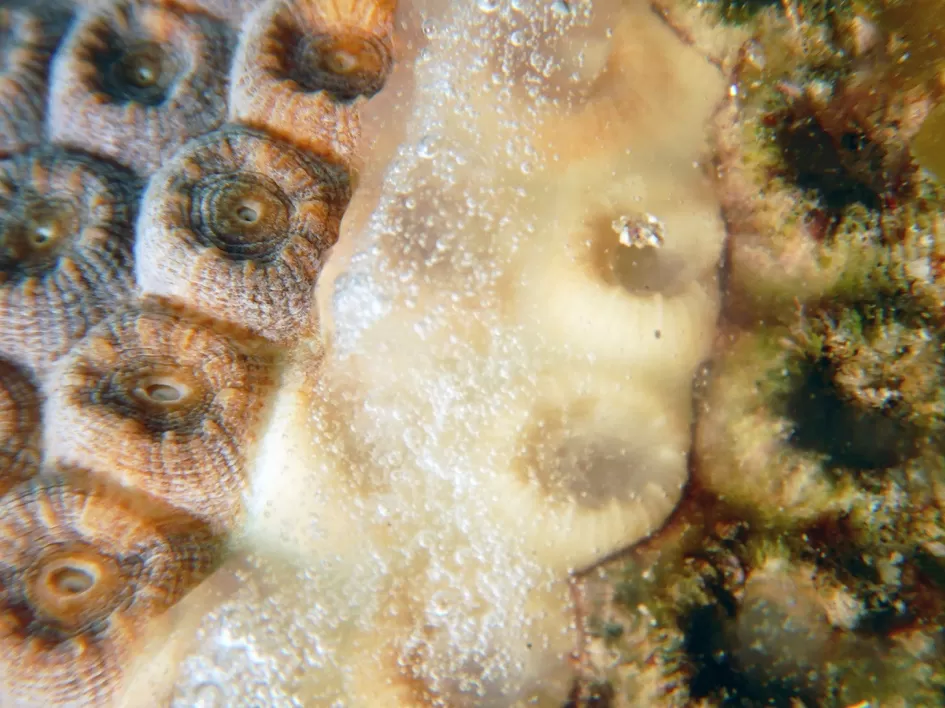
Search
For diseased corals, new probiotic treatments come in bags and pastes

For diseased corals, new probiotic treatments come in bags and pastes
Researchers at the Smithsonian Marine Station (SMS) have developed two new methods for applying probiotic treatments to wild corals infected with stony coral tissue loss disease (SCTLD) on Florida’s Coral Reef.
In early September, SMS scientists partnered with Dr. Brian Walker's GIS and Spatial Ecology laboratory at Nova Southeastern University (NSU) to test the two new treatment approaches on the reef: a bag for covering whole colonies and a paste for individual disease lesions.
The bag method entailed covering whole Montastraea cavernosa coral colonies with a weighted enclosure, injecting probiotics inside, and waiting two hours before removing the enclosure to ensure colonization of the coral with probiotic bacteria.
Additionally, scientists experimented with a probiotic-loaded paste, developed by SMS, to apply treatments directly to individual disease lesions. The paste hardens on contact with seawater to prevent it from floating away, and adheres to the coral tissue, which allows probiotics to colonize the coral.

The research team will revisit treated colonies regularly to assess the probiotics treatment success and retreat the corals if necessary. These two innovative strategies have enabled the first coral probiotic treatments of SCTLD diseased corals on the reef.
SMS researchers will continue to look at other potential methods for delivering therapies for SCTLD, as well as advancing knowledge of coral probiotics and the disease process itself.
--September 2020